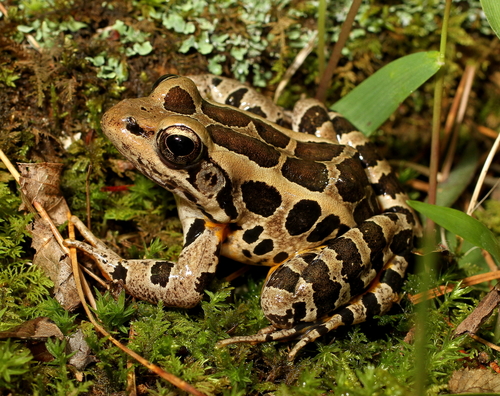
Pickerel Frog
The Pickerel Frog is easily recognized by its distinct rows of square spots and ability to secrete toxins. Found near water bodies, it helps regulate insect populations, making it an essential part of its ecosystem. Its unique markings make it a stunning visual presence in wetland habitats.
3-5 years
Lifespan
Least Concern
Conservation Status
Stable
Population Trend
Distribution Range of the Pickerel Frog
Lithobates palustris, commonly known as the Pickerel Frog, is native to North America. It primarily occurs in eastern and central regions of the United States. Its range extends from southeastern Canada through the Dakotas, south to Texas, and eastward to the Atlantic coast, excluding the Florida peninsula.
Pickerel Frog's Habitat
Environmental Conditions
Pickerel Frogs are typically found in cool, clear waters. They inhabit various wetland environments, including ponds, marshes, slow-moving streams, and springs. These frogs prefer areas with abundant vegetation and are often found in wooded or partially shaded regions.
Ecological Niche
The aquatic and semi-aquatic habitats of Lithobates palustris offer them a suitable environment for breeding and foraging. They consume a diet of invertebrates, including insects and spiders, thus playing a role in controlling these populations. Furthermore, their habitat often overlaps with that of other amphibian species, necessitating competition and resource partitioning. The Pickerel Frog is also known for its ability to secrete a skin toxin that deters predators.
Copyright @ Nature Style Limited. All Rights Reserved.
 English
English